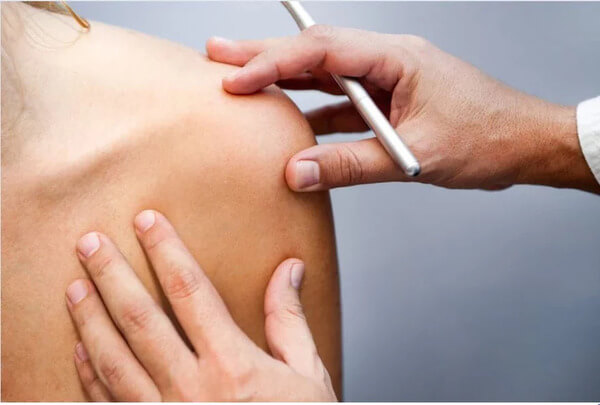Author: Randeep Singh / go to all articles on Yoga Concepts

Do you Know your Skin?
Test (There may be more than one answer)
1 ) How many layers thick is the human skin?
a. 1
b. 2
c. 3
2) Where is skin the thinnest?
a. Palms and soles
b. Eyelids
c. Shins
d. Nose
3) And where is it the thickest?
a. Buttocks
b. Palms and soles
c. Scalp
d. The back
4) Hair and nails are part of the skin
a. true
b. False
5) In how many days is the outer skin replaced?
a. Approximately 10 days
b. Approximately 27 days
c. Approximately 60 days
6) What gives the skin its elasticity and resilience?
a. The blood vessels
b. The muscle fibres
c. The ‘structure’ fibres (elastin and collagen)
d. The Sulphur bonds
7) Which of the following is not a function of the skin?
a. Temperature control (to regulate heat loss)
b. Excretory organs (to excrete toxins)
c. Synthesis of vitamins
d. Sexual function
e. Sense organ
8) How does skin maintain the body temperature?
a. It has the temperature control centre in it.
b. It has a biological thermostat.
c. By dilatation and contraction of blood vessels.
d. Indirectly through sweating.
9) What gives the skin its color?
a. Melanin pigment
b. Sun exposure
c. Heredity
d. Blood flow in the skin
10) Where is the skin most sensitive?
a. The genitals
b. Abdominal skin
c. Facial skin
d. Finger tips
11) What is the medical term for a white patch?
a. Vitiligo
b. Dermatitis whitica
c. Amelanogenesis
d. Leucoderma
12) In burns, how is the percentage area involved calculated?
a. By tape measurements
b. Randomly
c. By the rule of 9
d. By the seriousness of the patient’s condition
13) The majority of skin problems are incurable or recur after stoppage of treatment
a. True
b. False
14) What is a doctor specializing in skin problems called?
a. Dermatologist
b. Oncologist
c. Dermato-Pathologist
15) The skin is the largest organ of the human body?
a. True
b. False
Answers
1) c They are: the epidermis, the dermis and the subcutaneous fat
2) b & d
3) b & d
4) a They are called skin appendages, sweat glands too are skin appendages.
5) b This is the average period of life of a skin cell as it traverses from the bottom most layer (birth) to the outer most layer (death).
6) c These are present in the dermis.
7) None. All of them are the functions of the skin.
8) c More blood to the skin means more heat loss (sweating, evaporation).
9) a
10) d followed by c
11) d Any white skin patch can be called leucoderma. Some such skin patches are called vitiligo.
12) c Each of the following constitute 9 % of the total body skin area: head and neck, Chest, Abdomen, Upper back, Lower back, 2 arms, 2 thighs, 2 legs and genitals – 1 %.
13) b Not with modern medicine.
14) a
15) a Followed by the liver
Read other Informative Articles….
Yoga Concepts we use at Shahzadpur Camps
